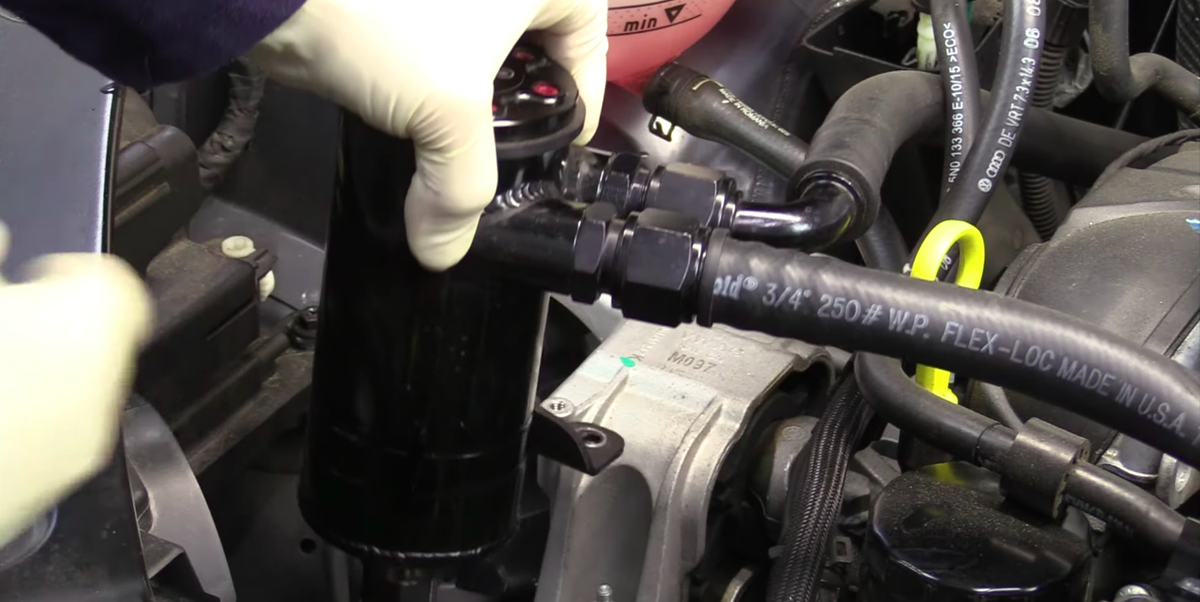Looking for info on the engine. Is it Direct Injection and has anyone installed a Catch Can? I've installed CC's in a few of my cars with great success. I'd like the same protection if this is a DI engine.

bluefleetwood
2019 Highlander 3.5L DOHC V6 24V w/Dual VVT-iW, is it Direct Injection?
bluefleetwood
Discussion starter
4 posts
·
Joined 2019
- Add to quote Only show this user
Looking for info on the engine. Is it Direct Injection and has anyone installed a Catch Can? I've installed CC's in a few of my cars with great success. I'd like the same protection if this is a DI engine.
Attachments
-
4 MB Views: 588
46 posts
·
Joined 2020
The 3rd gen V6 has the 2GR-FKS engine. The engine is both direct and port injection, which theoretically reduces or eliminates the need for a catch can that many owners might install on a direct-only injection engine. This was one of the few reasons why I choose my 2017 HL over the Earth Dreams direct injection engine on the Pilot.
4,326 posts
·
Joined 2015
Catch cans do nothing.
Its a DI and MPFI engine with dual injectors. No worries about issues that other automakers have...
There isn't a single catch can manufacturer that has ANY SAE-paper or independent testing, like SWRI, that can prove that it works.
For those with GDI-only junk engines:

 docplayer.net
docplayer.net
Its a DI and MPFI engine with dual injectors. No worries about issues that other automakers have...
There isn't a single catch can manufacturer that has ANY SAE-paper or independent testing, like SWRI, that can prove that it works.
For those with GDI-only junk engines:

Cryptocurrency Prices, Market Cap, Trading Charts: Bitcoin, Ethereum and more at PiedPiper
Live cryptocurrency prices, market caps, charts & daily insights for a wide range of coins on PiedPiper. Compare trends, top gainers and trading volume 24/7.
bluefleetwood
Discussion starter
4 posts
·
Joined 2019
I see the shit the cans I've installed in a couple of my cars catch. Pure moisture infested sludge. I cant imagine that shit is good running through any engine intake. It doesn't hurt the engine having one installed, but like I said, the shit it catches is well worth it in my book.Catch cans do nothing.
Its a DI and MPFI engine with dual injectors. No worries about issues that other automakers have...
There isn't a single catch can manufacturer that has ANY SAE-paper or independent testing, like SWRI, that can prove that it works.
For those with GDI-only junk engines:

Cryptocurrency Prices, Market Cap, Trading Charts: Bitcoin, Ethereum and more at PiedPiper
Live cryptocurrency prices, market caps, charts & daily insights for a wide range of coins on PiedPiper. Compare trends, top gainers and trading volume 24/7.docplayer.net
bluefleetwood
Discussion starter
4 posts
·
Joined 2019
Awesome thanks. But I do have CC's in two cars. My 09 CTS has VVT and there too no need for one. But I put one in anyway and you wouldn't believe the shit the can catches. Pure shitty moisture infested sludge. I cant see how letting that go through the intake is healthy for any engine.
4,326 posts
·
Joined 2015
Its simply condensing steam and catch nothing
Its is not a catch can...... it is a condensation can
And, what it catches doesn't cause IVD deposits
Its is not a catch can...... it is a condensation can
And, what it catches doesn't cause IVD deposits
421 posts
·
Joined 2017
Glad you guys know what you’re talking about. I had to look it up:

 www.roadandtrack.com
So how much do you think Road and Track got paid for that advertisement?
www.roadandtrack.com
So how much do you think Road and Track got paid for that advertisement?

Here’s How an Oil Catch Can Works, And Why You Might Want One
Have a direct injection motor? You might want to see this.
4,326 posts
·
Joined 2015
Ask R&T to see how much they got paid? R&T do any really testing?
2 issues with catch cans.... They freeze in the winter which cuts off PCV flow and could cause seals/gasket to blow out. And, in any climate, its reduces PCV flow. Both are exactly the opposite of what the end goal of a PCV system is. Reduced PCV flow increases fuel/water condensation buildup in the oil. Neither are things that I would want in my oil.
I will quote the pdf that I posted earlier:
"Positive crankcase ventilation(Blow-by) was not related to carbon deposit formation"
So, you install the latest UNTESTED fad and claim it is the solution to all problems.
"Increase of IVD due to larger aging of lubricant"
So, if you believe your owners manual and believe the 10k interval is acceptable, then you reap what you sow. For OLM, by certain automakers, I'd worry. The movement to synthetic moved the intervals considerably higher.
"More carbon deposits were accumulated when the average engine load was low"
hypermileage much? brag about range of tank or mpg?
In this situation, the biggest fad turned out to be the biggest joke.
2 issues with catch cans.... They freeze in the winter which cuts off PCV flow and could cause seals/gasket to blow out. And, in any climate, its reduces PCV flow. Both are exactly the opposite of what the end goal of a PCV system is. Reduced PCV flow increases fuel/water condensation buildup in the oil. Neither are things that I would want in my oil.
I will quote the pdf that I posted earlier:
"Positive crankcase ventilation(Blow-by) was not related to carbon deposit formation"
So, you install the latest UNTESTED fad and claim it is the solution to all problems.
"Increase of IVD due to larger aging of lubricant"
So, if you believe your owners manual and believe the 10k interval is acceptable, then you reap what you sow. For OLM, by certain automakers, I'd worry. The movement to synthetic moved the intervals considerably higher.
"More carbon deposits were accumulated when the average engine load was low"
hypermileage much? brag about range of tank or mpg?
In this situation, the biggest fad turned out to be the biggest joke.
4,326 posts
·
Joined 2015
The build up on the valves occurs when the engine is OFF. It does not occur when the engine is running. It condensate settling hardening during engine cool down. Has little to do with the PCV system.
Toptier fuel needs to be considered along with the 1-2 bottles of quality PEA based FI cleaners. How many don't use toptier fuels, even with their walmart or cheapest Ahmed's 'good gas' station even with the Lexus purchasing income level? How many maintain their vehicles appropriately for their driving style? dealer only? textbook manual negligence only?
I haven't seen the issue with Lexus's. Can you show some pictures of the issue on D4S engines?
There is a difference among DI-only IVD/port build up when compared to carbs, TBI, and MPFI. Most wouldn't be able to tell that difference.
Toptier fuel needs to be considered along with the 1-2 bottles of quality PEA based FI cleaners. How many don't use toptier fuels, even with their walmart or cheapest Ahmed's 'good gas' station even with the Lexus purchasing income level? How many maintain their vehicles appropriately for their driving style? dealer only? textbook manual negligence only?
I haven't seen the issue with Lexus's. Can you show some pictures of the issue on D4S engines?
There is a difference among DI-only IVD/port build up when compared to carbs, TBI, and MPFI. Most wouldn't be able to tell that difference.
-
?
-
?
-
?
-
?
-
?
-
?
-
?
-
?
-
?
-
?
-
?
-
?
-
?
-
?
-
?
-
?
-
?
-
?
-
?
-
?
- posts
- 6.4M
- members
- 659K
- Since
- 2001
ToyotaNation Forum is a community dedicated to all Toyota models. Come discuss the Camry, Tacoma, Highlander, 4Runner, Rav4, Corolla, Rav4 Prime and more!
Top Contributors this Month
View All
sdspeed
192 Replies
98LE2.2LCamryUS
171 Replies
ForaFrank
149 Replies





